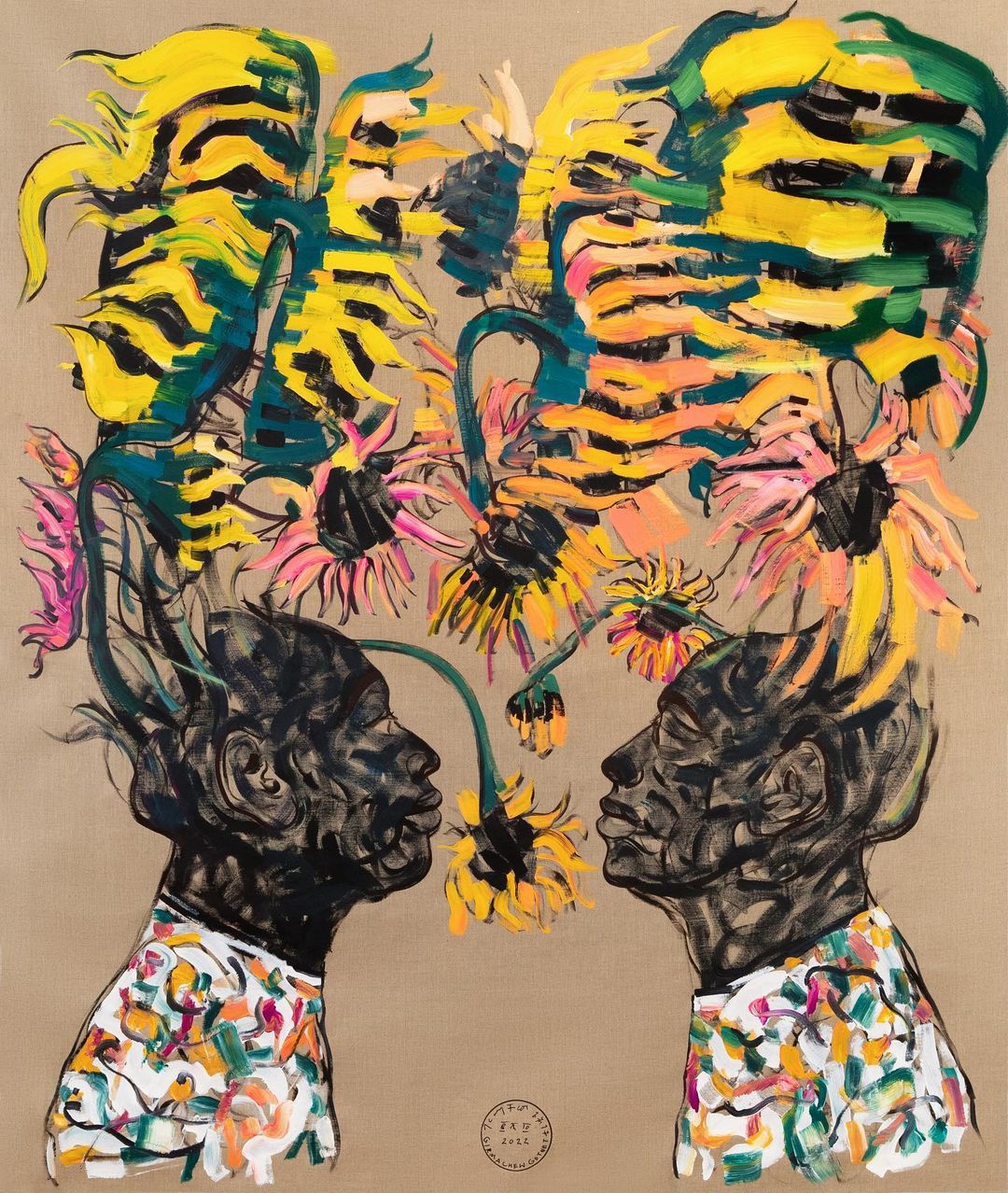The proverbial ‘white cube’ in art is quite simply a reference to art gallery spaces characterised by a square shape, white walls and top-down light sources—pretty much the de-facto way of presenting art all over the world. And yet, what’s supposed to be an aesthetic definition has also come to symbolize the historical commercial and institutional exclusion of marginalized voices in the lucrative global art market, which is currently valued at over $65,1-billion.
In many parts of the African continent—as the trend remains worldwide—owners, curators, collectors and the visual artists whose work attracts the most attention remain largely white. This is slowly changing, and in some of the continent’s largest cities, gallerists—many of them black—are changing the narrative by seeking out and creating opportunities for African artists on the global stage through special initiatives and exhibitions at home and abroad.
Here’s a list of five African galleries working to ensure a sustainable presence for African art in the global market.
1.
ADDIS FINE ART
ADDIS ABABA, ETHIOPIA & LONDON, UK
Co-founded in 2016 by business consultant Rakeb Sile, and art dealer Mesai Hailelul, Addis Fine Art prides itself in being Ethiopia’s first contemporary white-cube gallery. Hailelul had been selling Ethiopian art in Los Angeles, US, for three decades without returning home when the London-based Sile worked to lure him back to Ethiopia in order to address the question of the underrepresentation of African, and specifically Ethiopian artists in the art world.
To connect artists back home with collectors in the European market, the gallery opened a sister space in London with a mission to become the leading gallery championing fine art from the Horn of Africa. Addis Fine Art has since been described as one of the “Most Important Young Galleries in the World” by Artsy Magazine.
Learn more about Addis Fine Art here.
2.
GALERIE CÉCILE FAKHOURY
ABIDJAN, CÔTE D’IVOIRE/DAKAR, SENEGAL/PARIS, FRANCE
Galerie Cécile Fakhoury opened its doors in Abidjan, Côte d’Ivoire in September 2012 and has since expanded to Dakar, Senegal. In 2021 the gallery inaugurated its third space in Paris, France, situated in Avenue Matignon, continuing its mission to promote contemporary art from the continent and the diaspora. The space in Dakar was opened in 2018 after the owner discovered that 90% of the sales from her eponymously named Abidjan gallery came from international collectors. It was the result of an effort to return to the gallery’s vision to create a platform on the continent, for the continent.
An outpost in Dakar, a hub for the regional art scene with its influential Dak’Art Biennale of Contemporary Art, would go a long way to address the imbalance. The move opened the gallery up to a new audience, but also came at a time when collectors from other parts of Africa were becoming more open to collecting art outside of their home countries as they sought to diversify their collections.
Learn more about Galerie Cécile Fakhoury here.
3.
GALLERY MOMO
JOHANNESBURG, SOUTH AFRICA
Gallery MOMO was South Africa's first black-owned white-cube gallery, opening its doors in Johannesburg in 2003. Under the directorship of founders Monna and Lee Mokoena, the gallery has since established itself among the country’s best, representing the likes of Vivien Kohler, Jonathan Freemantle, Percy Konqobe, and Andrew Tshabangu, among others.
While MOMO only seeks out new tendencies from the continent, it also supports and exhibits artists from the diaspora, and hosts a residency programme for international artist and curators with the aim to encourage a dialogue and cooperation between artists from different parts of the world. One of its most important goals include the expansion of the local market, developing new audiences and attracting the attention of global critics and collectors to the African art scene.
Learn more about Gallery MOMO here.
4.
NUBUKE GALLERY
ACCRA, GHANA
Launched in 2020, Nubuke Gallery is an extension of Accra’s Nubuke Foundation, a contemporary art and culture institution. The foundation has since 2006 championed Ghanaian artists in a country that has, in recent years, experienced an explosion with its artists—the likes of Amoako Boafo, Ibrahim Mahana, and others—attracting global attention and high prices on their work.
The foundation has for many years hosted residencies to help artists from the region build their careers, supporting young, mid-career and experienced artists in this regard. The centre is open to the public as the centre aims to make art, culture, heritage and history accessible to all. Its programmes include exhibitions, reading, talks, film screenings, performances, seminars and workshops throughout the year.
Learn more about Nubuke Gallery here.
5.
OMENKA GALLERY
LAGOS, NIGERIA
First established in 2003, Omenka Gallery was founded by Oliver Enwonwu, the son of celebrated Nigerian artist Professor Ben Enwonwu. With a vision to increase the visibility and appreciation of African art and artists, Omenka has since 2010 participated in major international fairs like 1:54 Contemporary Art Fair and Art14 in London, FNB Joburg Art Fair, Invested Cape Town Art Fair, Art Dubai and Cologne Paper Art, among others.
Its programme of solo and group exhibitions showcases the work of emerging Nigerian artists alongside a variety of established names like Ayo Filade and the late JD Okhai Ojeikere. This approach has drawn the world’s attention to the space, increasing its global profile and that of the artists whose work it exhibits.
The gallery currently represents accomplished, world renowned Nigerian artists including Ebenezer Akinola, and Ima Mfon, as well as American artist Gary Stephens, among others.
Learn more about Omenka Gallery here.
the edit
THE NEW ROMANCE: THE BEST PIECES TO LOVE YOURSELF IN THIS VALENTINE’S DAY_
Feb 13, 2023
read more













